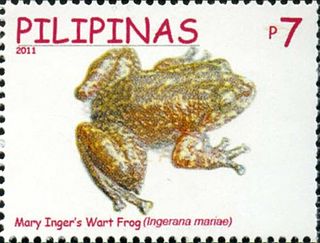 W
WAlcalus mariae, common name Mary's frog or Palawan eastern frog, is a species of frog in the family Ceratobatrachidae. It is endemic to the Palawan Island, the Philippines, and only known from its type locality, Mount Balabag, in the Mantalingajan mountain range. The specific name refers to Mary Lee Inger née Ballew, first wife of Robert F. Inger who formally described the species in 1954.
 W
WAnsonia muelleri is a species of toad in the family Bufonidae. It is endemic to the Philippines. Its natural habitats are subtropical or tropical dry forests, subtropical or tropical moist lowland forests, subtropical or tropical moist montane forests, rivers, intermittent rivers, and freshwater springs. It is threatened by habitat loss.
 W
WAphantophryne nana is a species of frog in the family Microhylidae. It is endemic to the Philippines and is known with certainty only from the island of Camiguin. It is unclear whether similar frogs from northeast Mindanao are referable to this species. It was described as Oreophryne nana, but based on molecular data it was moved to Aphantophryne in 2017. Common names Camiguin cross frog, Camiguin narrow-mouthed frog, and volcano cross frog have been coined for the species.
 W
WBarbourula busuangensis is a species of frog in the family Bombinatoridae. It is also known under the common names Philippine flat-headed frog, Palawan flat-headed frog, Busuanga jungle toad, Busuanga disk-tongued toad, and Philippine aquatic frog. It is endemic to the Busuanga, Culion, Balabac, and Palawan islands in the Philippines. It is an inhabitant of clear-water streams and is threatened by habitat loss.
 W
WThe black-spotted sticky frog is a small frog with a black spot just in front of each of its hind legs. It releases a sticky substance when threatened, thereby making it an unpleasant meal for predators, allowing it to escape from harm.
 W
WChaperina is a genus of frogs in the family Microhylidae. It is the only genus in the subfamily Chaperininae. It is also itself monotypic, being represented by the single species, Chaperina fusca, commonly known as the brown thorny frog, spiny-heeled froglet, and saffron-bellied frog. It is found on the Malay Peninsula, in Borneo and in the Philippines. It is abundant in Borneo but uncommon on the Malay Peninsula and patchily distributed in the Philippines.
 W
WThe Chinese edible frog, East Asian bullfrog, or Taiwanese frog is a species of frog in the family Dicroglossidae. It is found in Cambodia, China, Hong Kong, Laos, Macau, Malaysia, Myanmar, the Philippines, Taiwan, Thailand, and Vietnam. Its natural habitats are freshwater marshes, intermittent freshwater marshes, arable land, pasture land, rural gardens, urban areas, ponds, aquaculture ponds, open excavations, irrigated land, seasonally flooded agricultural land, and canals and ditches. They breed in spring–early summer.
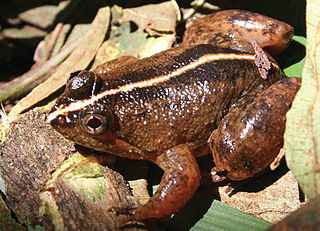 W
WThe common puddle frog, puddle frog, or yellow bellied puddle frog is a species of frog in the family Dicroglossidae. It has often been confused with Occidozyga sumatrana, and records of this species outside the Philippines likely represent that species.
 W
WPolypedates leucomystax is a species in the shrub frog family Rhacophoridae. It is known under numerous common names, including common tree frog, four-lined tree frog, golden tree frog or striped tree frog. Many past authors have united it with the common Indian tree frog in P. maculatus, but today they are generally considered distinct species. In its native range, it is also called "white-lipped tree frog", but this name is otherwise applied to a species of true tree frogs.
 W
WThe crab-eating frog is a frog native to south-eastern Asia including Taiwan, China, the Philippines and more rarely as far west as Orissa in India. It has also been introduced to Guam, and was most likely introduced from Taiwan. It inhabits mangrove swamps and marshes and is one of only 144 known modern amphibians which can tolerate brief excursions into sea water.
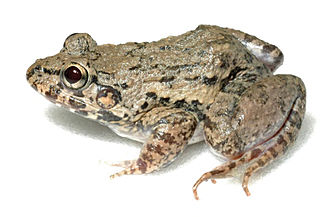 W
WFejervarya moodiei is a species of frog in the family Dicroglossidae. It has in the past been often mixed with Fejervarya cancrivora; its distribution is not well known but includes the Philippines, Thailand, Hainan Island (China), and India. Its natural habitats are freshwater marshes and intermittent freshwater marshes.
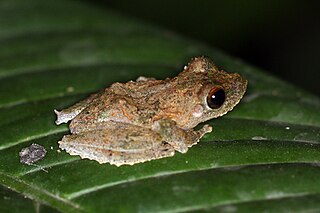 W
WThe frilled tree frog, rough-armed tree frog, or Southeast Asian tree frog is a species of frog in the family Rhacophoridae found in Brunei, Cambodia, India, Indonesia, Malaysia, Myanmar, the Philippines, Thailand, and Vietnam. Its natural habitats are subtropical or tropical moist lowland forest, subtropical or tropical swamps, subtropical or tropical moist shrubland, rivers, swamps, freshwater marshes, and intermittent freshwater marshes. It is threatened by habitat loss.
 W
WThe giant Philippine frog, large swamp frog, or Mindanao fanged frog is a species of frog in the family Dicroglossidae. It is endemic to the Philippines. Its natural habitats are tropical moist lowland forests, subtropical or tropical moist montane forests, rivers, intermittent rivers, freshwater marshes, and intermittent freshwater marshes. It is becoming rare due to habitat loss.
 W
WThe harlequin tree frog is a species of frog in the family Rhacophoridae found in Brunei, Indonesia, Malaysia, Thailand, and the Philippines. Its natural habitats are subtropical or tropical moist lowland forest, subtropical or tropical moist montane forest, freshwater marshes, and intermittent freshwater marshes. It is threatened by habitat loss.
 W
WThe horned forest frog or horned wrinkled ground frog is a species of frog in the family Ceratobatrachidae. It is endemic to the Philippines, where it is found in the Central Cordilleras of northern Luzon.
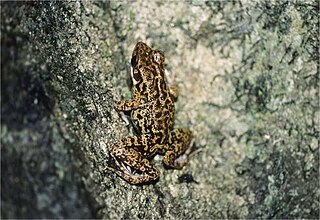 W
WHylarana moellendorffi is a species of true frog in the genus Hylarana. It is endemic to the Palawan islands of the Philippines. It inhabits streams and rivers in lower montane and lowland forests. It is threatened by habitat loss.
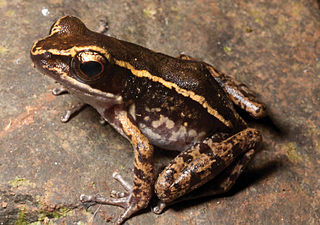 W
WHylarana similis is a species of true frog in the genus Hylarana. It is native to Luzon and surrounding smaller islands in the Philippines. Its natural habitats are subtropical or tropical dry forests, subtropical or tropical moist lowland forests, rivers, intermittent rivers, freshwater marshes, and intermittent freshwater marshes. It is threatened by habitat loss.
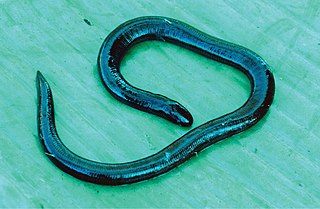 W
WIchthyophis mindanaoensis, also known as Todaya caecilian or Mindanao Island caecilian, is a species of caecilian in the family Ichthyophiidae. It is endemic to the island of Mindanao, the Philippines.
 W
WThe island forest frog is a species of frog in the family Ceratobatrachidae. It is endemic to the Philippines. It is found only on South Gigante Island just northeast of Panay, where it inhabits limestone karst habitats.
 W
WThe Kalinga narrowmouth toad is a species of frog in the family Microhylidae. It is endemic to the Philippines. Its natural habitats are subtropical or tropical moist lowland forests, subtropical or tropical moist montane forests, arable land, pastureland, and plantations. It is threatened by habitat loss.
 W
WLimnonectes palavanensis is a species of frog in the family Dicroglossidae. It is found in the Palawan Island and in Borneo. The species shows paternal care, a relatively rare trait in frogs.
 W
WThe Luzon fanged frog is a species of frog in the family Dicroglossidae. It is endemic to the Philippines.
 W
WThe Luzon narrow-mouthed frog is a species of frogs in the family Microhylidae.
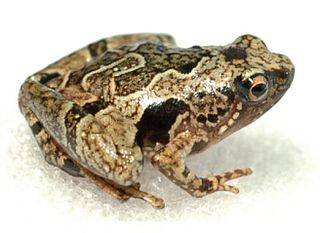 W
WMicrohyla petrigena is a species of frog in the family Microhylidae. It is found in northern and central Borneo and in the Sulu Archipelago of the Philippines. Common names pothole narrow-mouthed frog and Kapit rice frog have been coined for it.
 W
WThe Mindanao horned frog or Southeast Asian horned toad is a species of amphibian in the family Megophryidae. It is endemic to the Philippines.
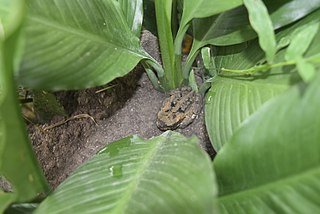 W
WThe Mindoro tree frog is a species of frog in the family Rhacophoridae. It is endemic to the Philippines.
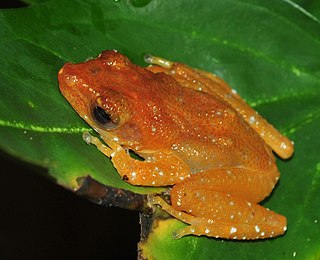 W
WNyctixalus pictus, also known as cinnamon frog, cinnamon treefrog, cinnamon bush frog, painted Indonesian treefrog, and white-spotted treefrog, etc., is a species of frog in the family Rhacophoridae. It is found in the Malay Peninsula, the Philippines, and parts of the Greater Sunda Islands.
 W
WThe painted narrowmouth toad or slender-digit chorus frog is a species of frog in the family Microhylidae.
 W
WThe Palawan horned frog is a species of frog in the family Megophryidae. It is endemic to the Balabac and Palawan islands, in the Philippines. Its natural habitats are subtropical or tropical dry forests, subtropical or tropical moist lowland forests, subtropical or tropical moist montane forests, subtropical or tropical moist shrubland, rivers, and intermittent rivers. It is threatened by habitat loss.
 W
WPelophryne brevipes is a species of toad in the family Bufonidae. It is endemic to the Philippines and found on the islands of Mindanao and Basilan. Records from elsewhere in Southeast Asia refer to Pelophryne signata or possibly other species. Common names Southeast Asian toadlet and Zamboanga flathead toad have been coined for it.
 W
WPelophryne lighti is a species of toad in the family Bufonidae.
 W
WPhilautus acutirostris is a species of frog in the family Rhacophoridae. It is endemic to the Philippines. Its natural habitats are subtropical or tropical moist lowland forests and subtropical or tropical moist montane forests. It is threatened by habitat loss.
 W
WPhilautus everetti is a species of frog in the family Rhacophoridae found in the Philippines and Malaysia. Its natural habitats are subtropical or tropical moist lowland forests, subtropical or tropical moist montane forests, and rivers. It is threatened by habitat loss. In Borneo, this species occurs in the mountainous area from Gunung Kinabalu National Park in Sabah to Gunung Mulu National Park in Sarawak.
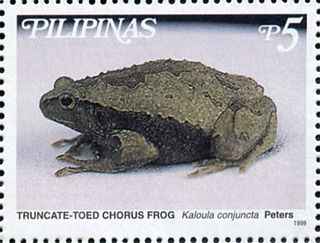 W
WThe Philippine narrowmouth toad or the truncate-toed chorus frog is a species of frog in the family Microhylidae. It is endemic to the Philippines. Its natural habitats are subtropical or tropical dry forests, subtropical or tropical moist lowland forests, subtropical or tropical moist shrubland, subtropical or tropical seasonally wet or flooded lowland grassland, rivers, intermittent rivers, freshwater lakes, intermittent freshwater lakes, freshwater marshes, intermittent freshwater marshes, arable land, pastureland, plantations, rural gardens, heavily degraded former forest, water storage areas, ponds, irrigated land, and seasonally flooded agricultural land. It is threatened by habitat loss.
 W
WPlatymantis is a genus of frogs in the family Ceratobatrachidae. They are commonly known as wrinkled ground frogs, ground frogs, and forest frogs.
 W
WPlatymantis biak, also known as the Luzon limestone forest frog, is a species of frog in the family Ceratobatrachidae. It is endemic to the island of Luzon, the Philippines, where it is known from the Biak-na-Bato National Park, its type locality, and from the immediate vicinity of the park. The specific name biak is Tagalog meaning "crevice" or "crack" and refers to the preferred limestone karst habitat at the type locality.
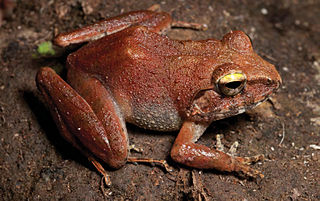 W
WPlatymantis cagayanensis is a species of frog in the family Ceratobatrachidae. It is endemic to the Philippines, where it is found along the north coast of Luzon Island and on Palaui Island.
 W
WPlatymantis corrugatus is a species of frog in the family Ceratobatrachidae. It is endemic to the Philippines, where it is found throughout the archipelago except Palawan. Its natural habitats are tropical moist lowland forest and subtropical or tropical moist montane forest. It is threatened by habitat loss. Platymantis corrugatus is one of the most common Platymantis species in the Philippines.
 W
WPlatymantis dorsalis is a species of frog in the family Ceratobatrachidae. It is endemic to the northern and central Philippines. Its natural habitats are subtropical or tropical moist lowland forests, subtropical or tropical moist montane forests, plantations, rural gardens, and heavily degraded former forests. It is threatened by habitat loss.
 W
WPlatymantis guentheri is a species of frog in the family Ceratobatrachidae. It is endemic to the Philippines, where it occurs in the rainforests of Leyte, Biliran, Maripipi, Bohol, Panglao, Dinagat, and Mindanao islands. Its natural habitats are subtropical or tropical moist lowland forest, subtropical or tropical moist montane forest, plantations, rural gardens, and heavily degraded former forest. It is threatened by habitat loss.
 W
WPlatymantis taylori is a species of frogs in the family Ceratobatrachidae. It is endemic to the Philippines and is known from the Sierra Madre of northeastern Luzon.
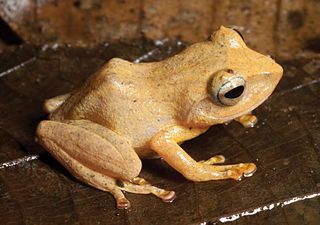 W
WThe Polillo forest frog is a species of frog in the family Ceratobatrachidae. It is endemic to the Philippines, where it occurs on Polillo Island and the adjacent coast of Aurora Province, Luzon.
 W
WPolypedates macrotis, commonly known as the dark-eared treefrog, sometimes also Bongao tree frog, Bongao bubble-nest frog, Baram whipping frog, or brown-striped tree frog, is a species of frog in the family Rhacophoridae. It is found in the central peninsular Thailand, Sumatra, Borneo, and Sulu Archipelago as well as a range of other Philippine islands.
 W
WThe pygmy forest frog is a species of frog in the family Ceratobatrachidae. It is endemic to the Philippines. It occurs in the Central Cordilleras and Sierra Madres of northern Luzon, and possibly also on Sibuyan Island.
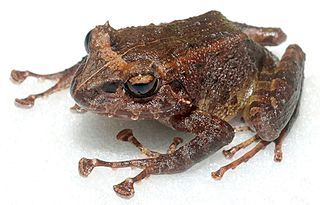 W
WThe Rabor's forest frog is a species of frog in the family Ceratobatrachidae. It is endemic to the southern Philippines, where it occurs in the rainforests of Bohol, Leyte, and Mindanao islands.
 W
WSanguirana everetti is a species of true frog. It is endemic to the island of Mindanao in the Philippines.
 W
WSanguirana igorota is a species of true frog, family Ranidae. It is endemic to Cordillera Central of the island of Luzon, Philippines. Its closest relative is Sanguirana luzonensis, and it has even been considered synonym of that species; a later study suggests still unresolved relationships between S. igorota, S. luzonensis, and S. tipanan. Common name Taylor's Igorot frog has been coined for this species.
 W
WSanguirana luzonensis, also known as the Luzon frog, is a species of true frog, family Ranidae. It is endemic to the island of Luzon, the Philippines. It occurs in swift-flowing, cool mountain streams and rivers in montane rainforest at elevations up to 2,000 m (6,600 ft). It is very common in many habitats, although it is suspected to be declining because of habitat loss and deterioration.
 W
WSanguirana sanguinea is a species of frog in the family Ranidae. It is found in Sulawesi, Indonesia and Palawan, the Philippines.
 W
WSanguirana tipanan is a species of true frog. It is native to the Sierra Madre mountains of the island of Luzon, Philippines. It inhabits cool streams and rivers in lower montane and lowland forests. It is threatened by logging and habitat loss.
 W
WThe small disked frog or swamp frog is a species of frog in the family Dicroglossidae. It is endemic to the Philippines.
 W
WThe spiny tree frog is a species of frog in the family Rhacophoridae. It is endemic to the Philippines and occurs on Mindanao, Leyte, Bohol, and Basilan, possibly wider.
 W
WStaurois natator is a species of frog in the family Ranidae. It is endemic to the Philippines, where found on the islands of Mindanao, Leyte and Samar. It has sometimes been reported from other Philippine islands and Borneo, but these populations are now regarded as separate species . Its natural habitats are subtropical or tropical moist lowland forests, rivers, and intermittent rivers. It is threatened by habitat loss.
 W
WThe Woodworth's frog is a species of frog in the family Dicroglossidae. It is endemic to the Philippines. Its natural habitats are subtropical or tropical moist lowland forest, subtropical or tropical moist montane forest, subtropical or tropical moist shrubland, subtropical or tropical seasonally wet or flooded lowland grassland, rivers, intermittent rivers, freshwater lakes, intermittent freshwater lakes, freshwater marshes, intermittent freshwater marshes, freshwater springs, coastal freshwater lagoons, arable land, pastureland, plantations, rural gardens, urban areas, water storage areas, ponds, aquaculture ponds, open excavations, irrigated land, and seasonally flooded agricultural land.